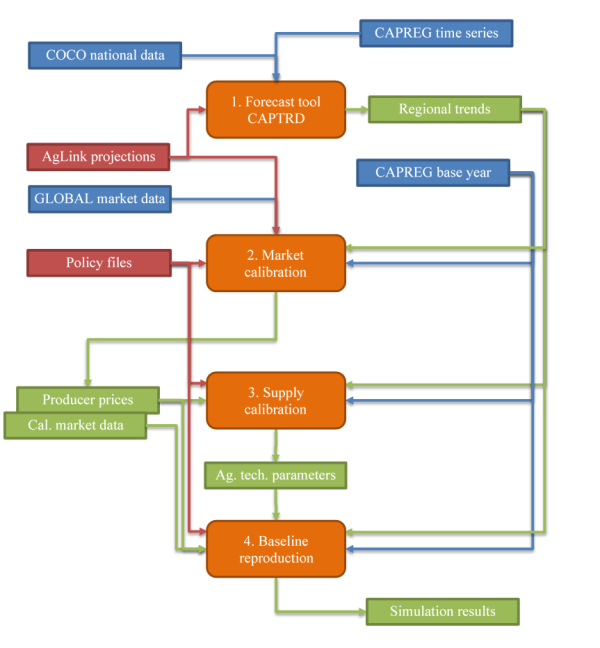Overview of CAPRI baseline processes
The creation of a baseline in CAPRI is considered a “workstep” in the GUI, and it consists of three distinct tasks. In addition to those three tasks, the modeller will usually want to perform a simulation of “no change” to reproduce the calibrated baseline with the model. Figure below illustrates the principal data flows involved in the baseline process. Each step is further described in a separate section of this chapter.
Figure 10: Overview of CAPRI baseline process
The forecast tool CAPTRD uses the consolidated national and regional time series from COCO and CAPREG together with external projections from the AgLink model. The result is a projection for the key variables in the agricultural sector (activity levels and market balances) of all regions in the supply models (EU+) that is consistent with the supply model equations.
- Next task is the market model calibration. That task uses the same AgLink projections, complemented with the harmonized trade database GLOBAL (see section The global database components), the baseline policy files, the regional data for the base year (CAPREG) and the regional trends coming from CAPTRD. The output includes a market data set that is consistent with the regional trends, with calibrated parameters to steer behavioural functions, and adds producer prices to be used by the supply models.
- The third task is the calibration of the supply models. This step also uses the regional data base, regional trends, and policy files, and calibrates various technical and behavioural economic parameters of the supply models so that the projected regional production is the optimal production at the producer prices coming from the market model calibration.
- Finally, the modeller typically wants to perform a simulation using all the calibrated parameters and projected data. The purpose is twofold: to verify that the calibration of the baseline worked as intended and to generate all reports for inspection in the GUI.

